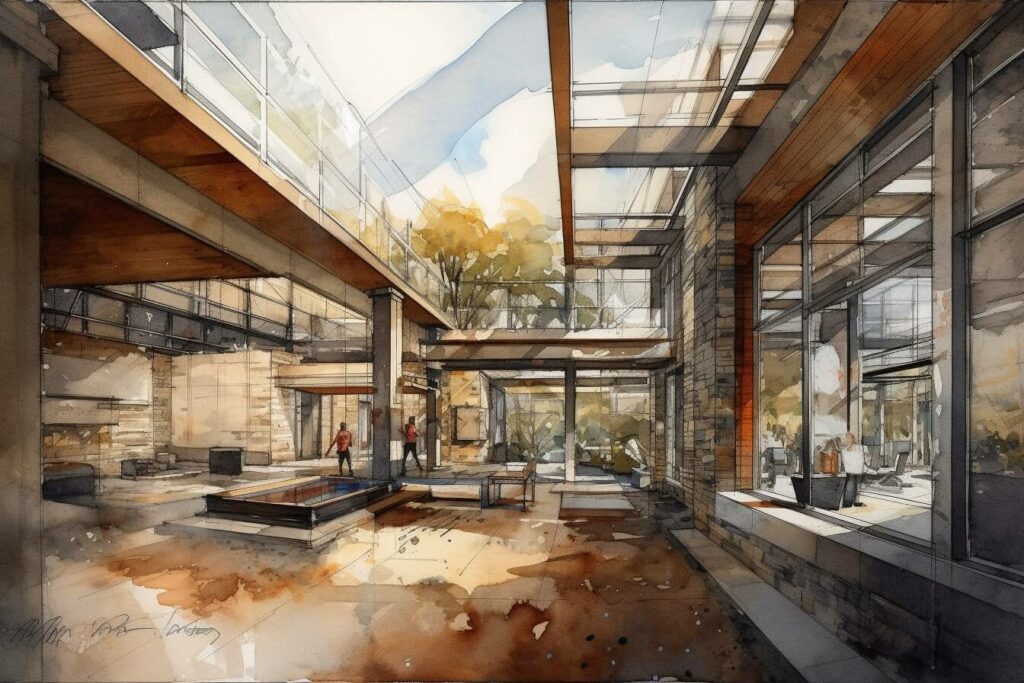The Unseen Side of Sustainability
When we think about sustainability and adaptive reuse, we generally think of solar panels, electric automobiles, and homes that use less energy. People are almost always interested in the new, the creative, and the green. We are taught to think that new construction is the answer, and that we should build smarter and greener from the ground up. But what if the best way to be sustainable isn’t to construct anything new? What if it’s about honouring and rethinking what’s currently there?
Culture and tradition are the most important parts of the “fourth dimension” of sustainability. People often forget about the cultural part of sustainability, even though the economic, environmental, and social parts are well-known. It is the nebulous yet important force that gives a community its history, identity, and spirit. This blog will talk about why keeping our built heritage, especially through the technique of adaptive reuse, is one of the best ways to ensure a truly sustainable future.

Project By: Mind Manifestation Design
The Problem with Demolition: The Crisis of Carbon in Buildings
Building and running buildings make up a shocking 40% of all carbon emissions each year. A big part of this, about 11%, comes from “embodied carbon,” which is the carbon dioxide that is released when construction materials like concrete, steel, and aluminium are mined, made, transported, and put together. When a building is torn down, all of that embodied carbon is liberated, and a lot of energy is squandered.
This is where adaptive reuse comes in as a revolutionary solution. Adaptive reuse means giving an old building a new life instead of knocking it down and beginning over. We lock in the embodied carbon by keeping the existing building and stop the environmental damage that comes with new construction. Researchers have found that this can lead to a huge drop in carbon emissions. For example, the Quay Quarter Tower in Sydney was rebuilt, keeping two-thirds of the old construction. This saved 8,250 tonnes of greenhouse gas emissions, which is like not having to demolish the building for six to nine months.

It is vital and urgent that net zero buildings move from being one-off novel exemplars to business-as-usual. Image: Jw/Unsplash
More Than Just a Facade: The Economic and Social Case
Adaptive reuse is good for the environment, but it’s also a strong economic and social force. In many circumstances, it costs less to fix up an old building than to build a new one from scratch. This is because you don’t have to pay for demolition, disposal, and new materials. This method offers opportunities in the area for trained craftsmen and experts who know how to work with old materials and building methods.
Adaptive reuse creates a sense of place and belonging that goes beyond the money. It binds a community to its past by giving it a physical link to history that new buildings can’t provide. To keep a historic building, you have to keep the memories, tales, and cultural traditions that go along with it. This makes the community stronger and more resilient, and it takes pride in its unique character. Urban planners term this “social cohesion.”

Image Credits: Architecturaldigest.in
Brutalist Renaissance: A Second Chance for the “Ugly”
The change of Brutalist architecture is a superb illustration of the adaptive reuse movement. People have misread these huge concrete buildings for decades, and they are often scheduled to be torn down. Brutalist buildings used to be thought of as chilly and uninviting because of their rough, exposed concrete and huge shapes. But today they are being honoured and used again, showing that even the hardest buildings can be brought back to life.
We are not only saving a lot of embodied carbon by embracing and upgrading old buildings, but we are also preserving an important part of architectural history. The Brutalist resurgence shows how adaptable these buildings are. For example, an old power plant has been turned into a lively art museum, and a former government office building now has luxury apartments.

HABITAT 67 BY MOSHE SAFDIE. 1967, MONTREAL
The Path Forward: How to Include Our Heritage in a Sustainable Future
To really understand the “fourth dimension” of sustainability, we need to change the way we think about things from a linear “build, use, demolish” model to a circular, regenerative one. This necessitates cooperation among policymakers, architects, developers, and local communities.
- Change Policy: Governments can encourage adaptive reuse over new building by giving tax breaks, speeding up the permitting process, and giving out subsidies.
- Inform the Public: We need to make people more aware of the importance of our built heritage by showing them successful initiatives that show how they are good for the environment and important to our culture.
- Utilise technology to come up with new ideas: Architects and engineers can utilise modern tools like Building Information Modelling (BIM) and 3D scanning to better evaluate and plan for the reuse of old buildings.

Image Credits: Adsttc.com
In the end, sustainability is more than just leaving behind a clean planet for future generations. It’s also about what we pass on about our culture and history. Our history is not a stagnant remnant of the past; it is a living, breathing part of our present, and it holds the key to a more sustainable, meaningful, and beautiful future.
Reference
Adaptive Reuse: A Strategy for Holding History and Carbon — NewStudio Architecture
(PDF) Adaptive Reuse of Cultural Heritage
For more blogs like this CLICK HERE!





